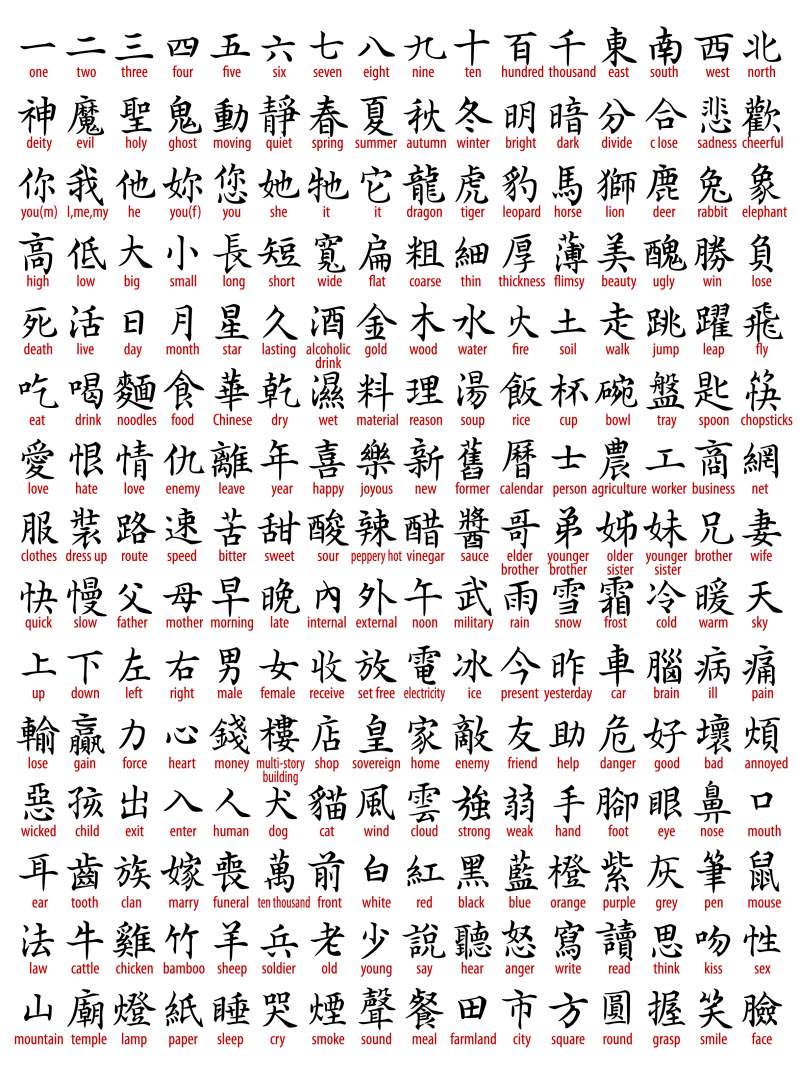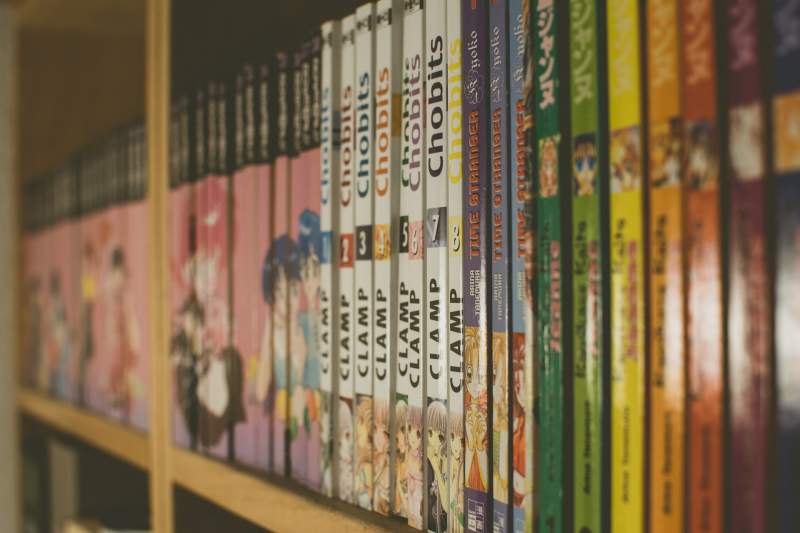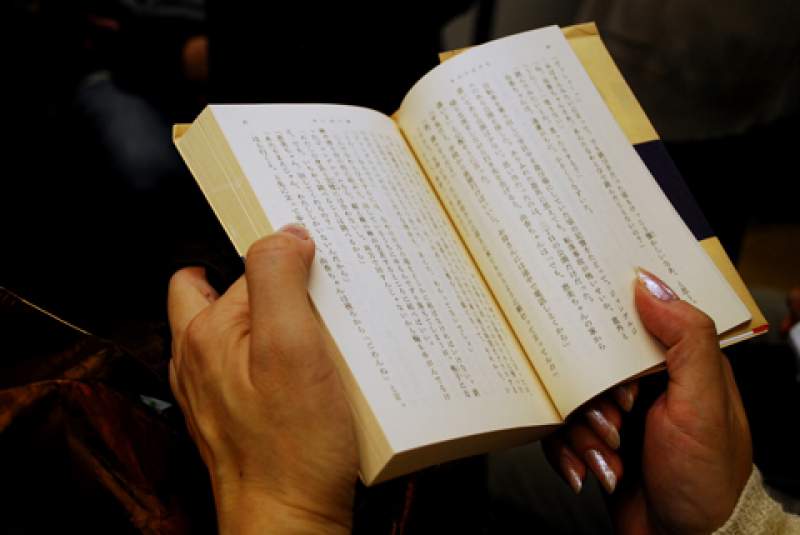Can I Read Manga After Remmbering the Kanji

So you're starting out on your Japanese journey.
Maybe you lot're trying to follow along with your favourite song lyrics, or perchance you found a Japanese book or manga you're super excited to read.
Mayhap you want to write a letter of the alphabet to your new Japanese pen pal.
There's but one problem…
In order to read or write in Japanese you need to know something very important — kanji.
By the way, if you want to learn Japanese fast and take fun while doing information technology, my superlative recommendation is Japanese Uncovered which teaches you through StoryLearning®.
WithJapanese Uncoveredy'all'll utilize my unique StoryLearning® method to learn Japanese naturally through story… not rules. Information technology'south as fun equally it is effective.
If you're prepare to become started,click hither for a 7-day Costless trial.
What Are Kanji?
Kanji are ane of three elements used in the Japanese writing system.
They are a set of written characters that accept been adopted from the Chinese writing system and are used together with the native Japanese hiragana and katakana characters to write Japanese.
So if you want to read or write in Japanese, you lot'll need to learn them!
Let's take a closer looker at the three elements of written Japanese and the function of kanji among them.
Hiragana, Katakana And… Kanji
Whenever you lot wait at a Japanese sentence, yous probably see a agglomeration of minor, relatively uncomplicated characters, similar this:
- これはひらがなです
Those are hiragana, one of the ways that Japanese people write down the sounds of their language.
You might also run into other, similar characters that look a bit chunkier:
- カタカナ
Those are katakana, an alphabet Japanese people utilize to write down words that aren't originally Japanese.
Simply maybe, mixed in with those characters, y'all spot a big, intimidating blob, like this: 漢字を読めますか
Those are kanji, and they've been intimidating new learners of Japanese for, well, basically every bit long as they've existed.
Which is like 1500 years at least!
The Benefits Of Kanji Vs. Hiragana
Kanji are borrowed from Chinese and they're more circuitous than hiragana or katakana.
For example, you might know that the Japanese word for "water" is mizu.
Nosotros tin write that in hiragana equally みず.
This is really phonetic, as hiragana sounds out the word:
- み is "mi"
- ず is "zu"
Notwithstanding, we can also write the same word in kanji every bit 水.
It's yet pronounced mizu, but now we can represent that entire idea in ane single character instead of "spelling it out" in hiragana with two split up characters.
Sometimes, if you put two kanji together, they can make a new word based on their two individual parts.
Did yous know that 漢 (kan, or かん) means "Chinese"?
And the grapheme ji (字, or じ) ways, well, "character."
What happens when yous put them together? 漢字!
That'due south right, information technology's kanji (かんじ), which literally means "Chinese grapheme"!
How appropriate, correct?
Remember, Japanese borrowed kanji from the Chinese, and so of course it makes sense to call them "Chinese characters."
Hiragana is a user-friendly style to "spell out" a word if you don't know how to write its kanji but you practise know how to say it.
However, using kanji saves a lot of space, and if yous acquire to empathize how kanji are fabricated, yous may even be able to estimate what some characters hateful or how to say them, fifty-fifty if yous've never seen them before!
Withal, in club to do that, you have to know how kanji are ready up, which is what we'll look at adjacent…
How Are Kanji Prepare?
Think of kanji like a little puzzle; they're made out of pieces, and each piece has a specific place where information technology fits in.
As an example, let's take a look at the kanji 海, or うみ (umi).
If nosotros take it apart, we tin get a hint on what information technology means.
Try breaking it into a left side and a right side.
On the right side we can abstract 毎, a regular old kanji that we might find anywhere.
On the left side that leaves u with 氵, which means "water".
Could it be that the kanji 海 which is fabricated up of these ii more basic parts has something to practise with h2o?
You bet!
海 is the kanji for "ocean".
If you had known that 氵ways water, you might accept been able to guess what this discussion meant if you lot saw information technology in a sentence.
The Transformation Of Radicals In Kanji
Just hang on a second…
Nosotros already know from our previous example that 水 means h2o, so what's going on?
Why do these two await unlike when they mean the aforementioned thing?
This slice of kanji that gets tacked on to a bigger kanji is called a radical, and radicals change shape when you put them onto another kanji.
There are 214 radicals in Japanese and these are the base characters from which all other more than advanced characters are built.
Yous might see this in, say, "earth" (土) vs. 塚, a "little colina" or burying mound.
The earth symbol looks nigh the same appears on the left side of this kanji.
Simply when information technology is used as a radical in this way, we can see its bottom line start to slant upward.
Can y'all see conspicuously how the line at the lesser of 土 slants upwardly when it become part of 塚?
It also happens with 人, which means "person."
If we use 人 as a radical, all of a sudden "woah!", we become 侠 ("tomboy")! It hardly looks the same.
Sure, it tin can be frustrating to recall, "Wow, I just learned some kanji, and now I have to learn them over again in order to be able to tell what they are when they're radicals!"
But the expert news is, there's non really that many radicals.
If yous just acquire a few common ones, like the water, earth, and person radicals above, y'all've already got a big head start.
Whenever you take a wait at a kanji, run into if y'all can spot a radical and think about whether information technology tin give yous a clue on the kanji's meaning.
How To Larn Kanji? six Steps To Become Yous Started

The first step is always the hardest, they say! And so to make it a fleck easier for y'all, hither are half dozen simple steps y'all can accept to kickoff learning Kanji right away.
i. Start By Learning The Radicals
As you saw in the last section, radicals a pretty big part of how kanji are fix!
These characters are the 'basis' for most of the more complicated kanji characters so it's a skilful idea to master them first.
At that place are 214 in total but y'all can start by simply focusing on the nigh mutual ones and gradually building up your noesis from there.
2. Exercise Stroke Order To Aid You Memorise Kanji
One of the best means to memorise kanji is to learn to write in kanji.
Did yous know that kanji are written in a specific society, line by line?
This is chosen "stroke order," and while it seems like information technology wouldn't make much of a divergence, it's really of import.
Take a await at 海 again.
When writing this kanji, you would start with the topmost dot on the left.
Then the second dot downwardly, then the concluding stroke in the radical.
Subsequently that, move all the mode back up to the top and make the little chapeau (2 strokes, first the i on the left, then the horizontal i).
Japanese dictionaries will usually tell you what lodge to draw the strokes in.
Then… who cares?
Does it really matter what order I draw the lines in?
Well, kickoff of all, people reading your handwriting really care.
If you exercise a stroke backward or beginning in the wrong place, it can make your kanji hard to read.
Imagine how much wobblier and weird information technology would await if y'all drew a check mark by starting at the very top and going backward!
You'll also find that after you practice stroke order for a bit, it becomes easier to remember kanji.
So fifty-fifty if you're focusing on learning to read rather than write in Japanese, information technology'due south worth practicing stroke social club as a way to help you memorise the kanji and therefore improve your reading skills!
3. Learn Jouyou Kanji
Okay, that's squeamish and all—but how practice you actually choose which kanji to learn?
After all, at that place are more than than 50,000! Phew!
The easiest way to cull your kanji is to focus on the jouyou kanji.
(Jouyou is written as 常用漢字, which literally means, "unremarkably used Chinese characters." See how we can guess what kanji mean when we put them together?)
The jouyou kanji are what kids in Nippon larn outset.
They're the nigh common kanji you'll run into, and if you learn all of them, y'all'll be able to read at to the lowest degree 80% of the Japanese language you find anywhere.
That'due south a large step!
The jouyou kanji will guide y'all through some really helpful words – everything from "tree" (木) and "me" (私) to more advanced words similar "constabulary" (法律) and "vicious wheel" (悪循環, which is one of my favorite kanji, by the manner; "bad" + "repeating" + "circle"? It's perfect!).
4. Supplement Jouyou Kanji With Other Words That Are Of import To You
As yous go through the jouyou kanji, yous might remember to yourself, "Man, I wish I knew how to say X!"
Supplement the jouyou kanji you're learning with any words that are important to you lot.
This will depend a lot on why you're learning Japanese in the first place.
If y'all want to talk to a pen pal, try thinking about words you'll utilize often: seasons, the weather, what you do in your life.
If you're learning kanji so yous can practice research in a specific field, try to think of words that are really important for describing what you do.
Or if you're learning Japanese in lodge to read Japanese literature or manga, focus on the vocabulary that's most relevant to the types of things yous read.
Choose some words that are relevant to you and do those alongside the jouyou kanji.
5. Use Spaced Repetition
I already mentioned how y'all can practise writing kanji by learning stroke orders, but reading kanji is another of import skill to develop.
One actually like shooting fish in a barrel manner to do this is past using a smartphone app similar Anki or Flashcards Deluxe that use spaced repetition applied science.
When you use these apps, you can create your own set up of flashcards to practise your kanji with!
Try making kanji flashcards for any kanji you have a hard time remembering. I do it a few different ways:
- Make cards with kanji on the front to exercise either for their significant or pronunciation.
- Create cards with whole sentences on them and exercise reading them, kanji and all.
- Make cards with a word in your native linguistic communication on the front end, and so try to write out the kanji that you would use for information technology.
What makes spaced repetition dandy is that it learns from y'all.
If you lot always get a particular menu right, it will wait a while before it gives y'all that carte du jour again.
If y'all ofttimes get a kanji wrong, it will show yous that card more often until you get it down.
These systems adapt to your learning way and brand kanji memorization a nail!
6. Read In Japanese Equally Much Equally Possible So You Can Encounter Kanji In Context
Memorising kanji is 1 thing… but unless you see them in context y'all'll never actually acquire how to use them in real-life situations when yous need to write or speak the words yourself!
That'southward why I believe it'due south of import to practice lots and lots of reading in Japanese then that you tin can larn non just what each kanji means just how it's actually used as part of the language. Reading is at the core of the StoryLearning® method.
The challenge here is finding interesting reading fabric that's at the right level for you.
Subsequently all, reading will simply be effective if y'all can sympathize the bulk of what you're reading.
Y'all also need to listen to sound of what yous read if possible, otherwise you won't know how to pronounce the new kanji you encounter!
All in all, cloth like this is pretty hard to notice.
So I decided to create it myself!
Information technology's called Conversations and it tin larn to read kanji naturally, in context, while listening to audio at the same time.
I've too included hiragana transcriptions of central words in the text so that you accept that aid as you work to improve your kanji knowledge!
You lot tin can find out more nearly it here.
Learning Kanji Is Challenging, Simply You Can Do It!
Kanji might seem overwhelming, especially when you're thinking about radicals and stroke guild.
"How am I always going to do this?" you might wonder.
The best thing to exercise is just leap right in with the jouyou kanji and get started. I recommend you begin by enrolling in Japanese Uncovered. The course includes a number of kanji lessons and y'all'll be able to ask questions and get feedback from our team of Japanese experts.
You'll start with like shooting fish in a barrel, two- or three-stroke characters, and before you know information technology, yous'll look at kanji with 16 strokes and recall, "Eh, aught I haven't seen before!"
Spend plenty of time exploring how different kanji are synthetic and read them regularly in context, and you'll be well on your mode to success!
Image credit: "Japanese_Reading" by Arnaud Titoy [CC Past 2.0 (https://creativecommons.org/licenses/by/2.0)], via Wikimedia Commons
Source: https://storylearning.com/learn/japanese/japanese-tips/how-to-learn-kanji




ارسال یک نظر for "Can I Read Manga After Remmbering the Kanji"